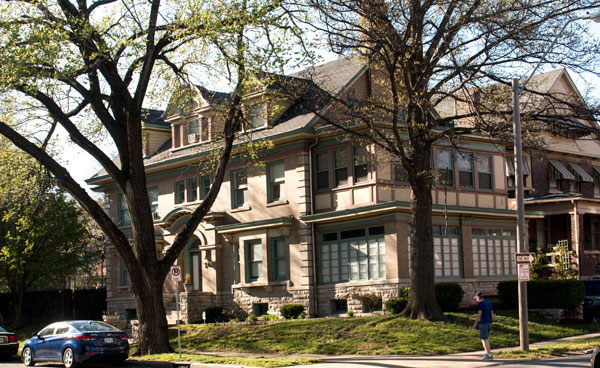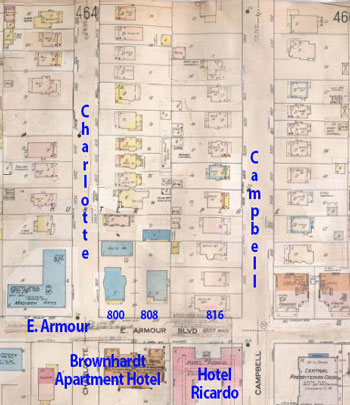
Much has changed along Armour Boulevard since the early 1900s, but one block, the north side of Armour to 34th Street from Campbell to Charlotte, remains much the same. One of the Armour mansions is no longer there, but the remaining homes of the block look pretty much the same as when they were built.
As part of our Uncovering History Project, the Midtown KC Post is examining each block in Midtown. A set of 1940 tax assessment photos is available for many blocks.

A 1909-1950 Sanborn map of the block shows the large mansions along Armour Boulevard and blocks of more modest homes lining Campbell and Charlotte Streets. Like much of Armour after the 1920s, the south side of Armour in this block was converted to apartment hotels.
Armour Boulevard, at the turn of the 20th century, was a newly built thoroughfare of mansions and homes of some of the wealthiest and most influential people in Kansas City. This block was no exception. At 816 E. Armour, Samuel E. Sexton of the Hucke & Sexton Contracting Company lived in a large home. Another well-known businessman, William Huttig, lived at 800 Armour. Huttig founded Western Door and Sash and contributed to constructing the Convention Hall and the Baltimore Hotel. A third home once stood between these two.

As part of the new Hyde Park area of Kansas City, the homes along Charlotte and Campbell Streets filled in with middle-class residents, including Frank Askew, a city councilman in 1910 (3440 Campbell), and Hugh Sheridan, a retired farmer from Edina, Mo. and his son (3427 and 3429 Charlotte).

Historic photos courtesy Kansas City Public Library/Missouri Valley Special Collections.